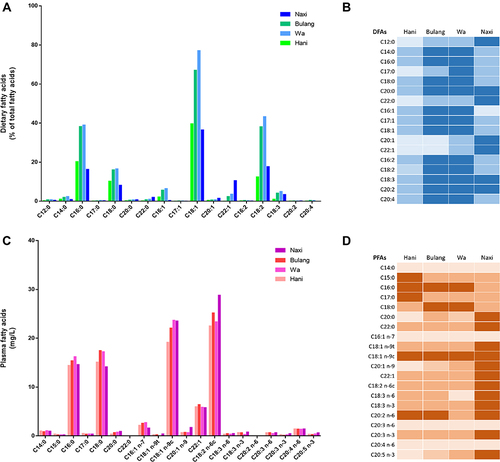Figures & data
Figure 1 Inclusion process of enrolled people.

Table 1 Baseline Characteristics of Participants
Figure 2 Comparison of fatty acids among four minorities.

Table 2 Dietary Fatty Acids of four Minorities (% of Total Fatty Acids)
Table 3 Plasma Fatty Acids of four Minorities (mg/L)
Table 4 Conditional Logistic Regression Analysis of Obesity
Figure 3 Canonical correlation analysis of dietary fatty acids and plasma fatty acids.

